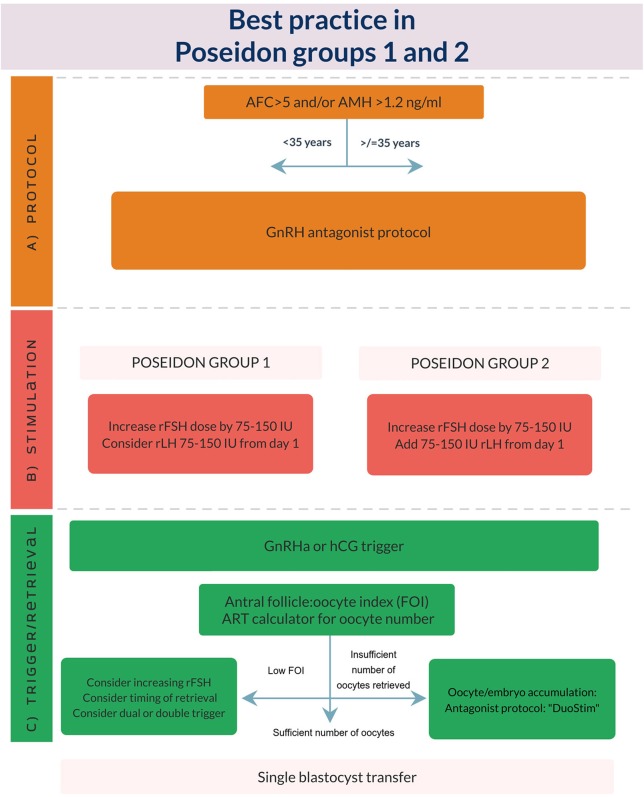Figure 1.
Best practice in POSEIDON groups 1 and 2. (A) POSEIDON recommends use of GnRH antagonist co-treatment for all patients in POSEIDON groups 1 or 2. (B) Ovarian stimulation strategy: First choice should be an increase in daily rFSH dose by 75–150 IU. In POSEIDON Group 1 patients with follicular stagnation at follicle sizes 1–12 mm, rLH 75–150 IU daily should be added from day 1 of stimulation. In POSEIDON 2 patients rLH 75–150 IU daily should be added to all patients from day 1 of stimulation. (C) Ovulation trigger strategy: GnRHa is mandatory in the follicular phase stimulation of the DuoStim protocol. All trigger agents can be used in the luteal phase stimulation. In non DuoStim GnRH antagonist cycles, the choice of trigger between GnRHa and hCG should rely on the embryo transfer strategy (fresh or frozen), patient characteristics (e.g., hypo-hypo) and clinical experience. In cases with a low FOI (4), clinicians should consider pretreatment including short term estrogen or progestin therapy, or OCP for synchronization of the follicles prior to stimulation, adjuvant LH activity during stimulation, or changing trigger strategy to either dual or double trigger. In case of an insufficient number of oocytes retrieved as determined by the ART calculator, the probability of transferring a euploid embryo should be discussed with the patient to counsel whether an immediate transfer or a new stimulation should be suggested (3).

